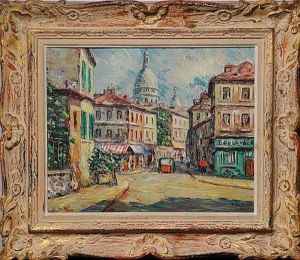Valentine Arnoulin Paintings
Valentine Arnoulin, though not among the most widely recognized names in the annals of art history, made a distinct mark in the 19th century French art scene. Born in 1826, Arnoulin's journey into the arts was influenced by the cultural vibrancy of France during a period marked by significant political and social transformations. His early life, shrouded in relative obscurity, was nonetheless pivotal in shaping his artistic pursuits. He emerged during a time when France was a crucible of artistic innovation, with movements such as Romanticism giving way to Realism and later Impressionism.
Arnoulin's work, primarily in painting, exhibited a keen observation of daily life and a delicate sensitivity to the interplay of light and shadow, suggesting that he may have been influenced by the emerging Impressionist movement, yet his style remained distinctively his own. He navigated the fine line between traditional academic art and the burgeoning avant-garde movements of his time, never fully committing to the radical departures of his contemporaries. This balancing act reflected in his choice of subjects, which often depicted serene landscapes, intimate portraits, and scenes of rural life, imbued with a sense of tranquility and timelessness.
Despite his evident talent and contribution to the French art scene, Valentine Arnoulin did not achieve the same level of fame as his peers. His reluctance to fully embrace the more revolutionary movements of the era may have contributed to his relative obscurity. However, his works have been appreciated for their technical skill, emotional depth, and the subtle yet profound way they capture the essence of 19th-century French society.
Arnoulin's death in 1890 marked the end of a career that, while not heralded by the masses, was nonetheless cherished by connoisseurs and collectors who recognized the quiet beauty and refined elegance of his work. Today, Valentine Arnoulin is remembered as a skilled artist who contributed to the rich tapestry of French art, offering a bridge between the old and the new, and capturing the spirit of an era on the cusp of modernity.
